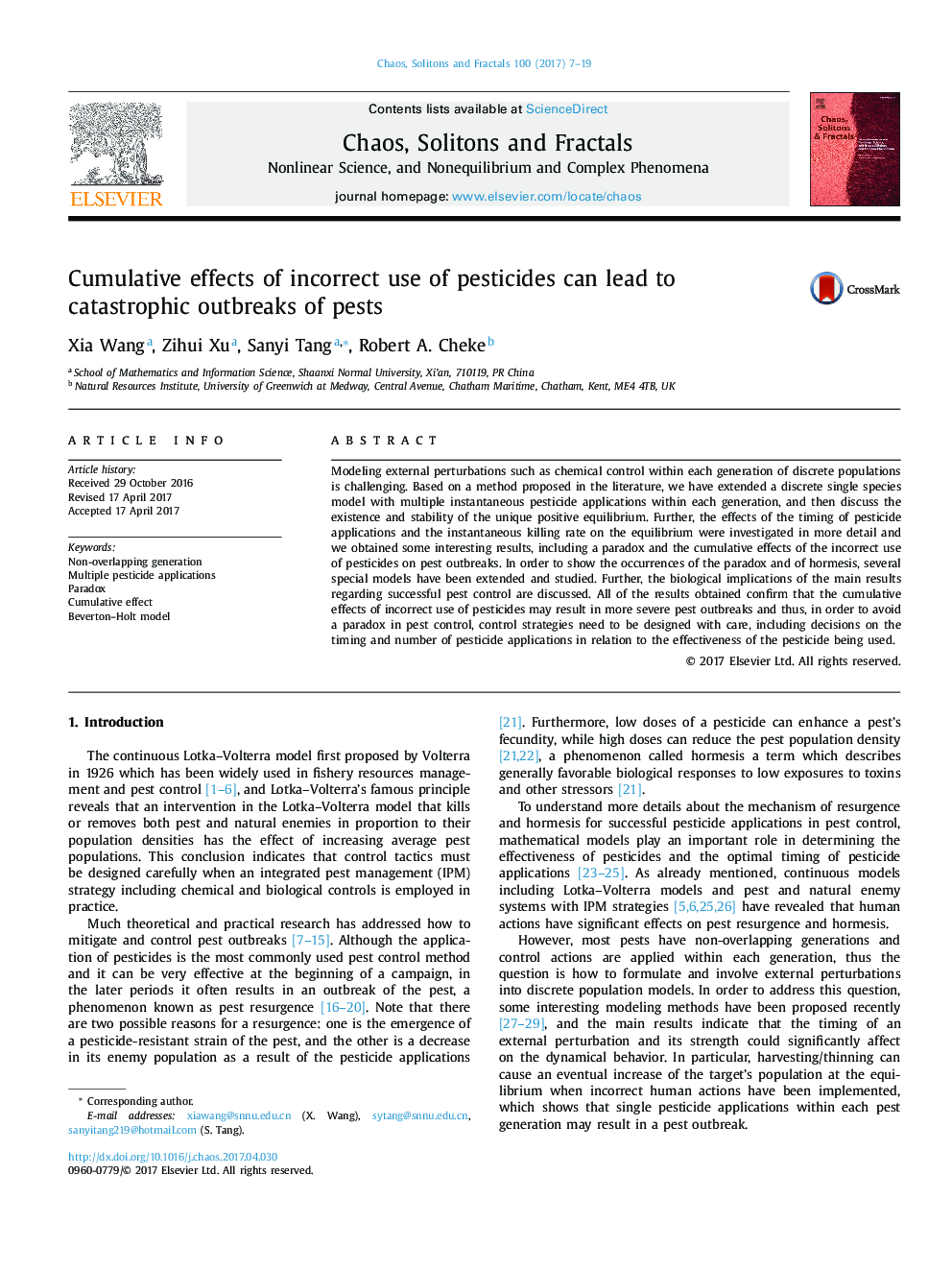| Article ID | Journal | Published Year | Pages | File Type |
|---|---|---|---|---|
| 5499613 | Chaos, Solitons & Fractals | 2017 | 13 Pages |
Abstract
Modeling external perturbations such as chemical control within each generation of discrete populations is challenging. Based on a method proposed in the literature, we have extended a discrete single species model with multiple instantaneous pesticide applications within each generation, and then discuss the existence and stability of the unique positive equilibrium. Further, the effects of the timing of pesticide applications and the instantaneous killing rate on the equilibrium were investigated in more detail and we obtained some interesting results, including a paradox and the cumulative effects of the incorrect use of pesticides on pest outbreaks. In order to show the occurrences of the paradox and of hormesis, several special models have been extended and studied. Further, the biological implications of the main results regarding successful pest control are discussed. All of the results obtained confirm that the cumulative effects of incorrect use of pesticides may result in more severe pest outbreaks and thus, in order to avoid a paradox in pest control, control strategies need to be designed with care, including decisions on the timing and number of pesticide applications in relation to the effectiveness of the pesticide being used.
Keywords
Related Topics
Physical Sciences and Engineering
Physics and Astronomy
Statistical and Nonlinear Physics
Authors
Xia Wang, Zihui Xu, Sanyi Tang, Robert A. Cheke,
